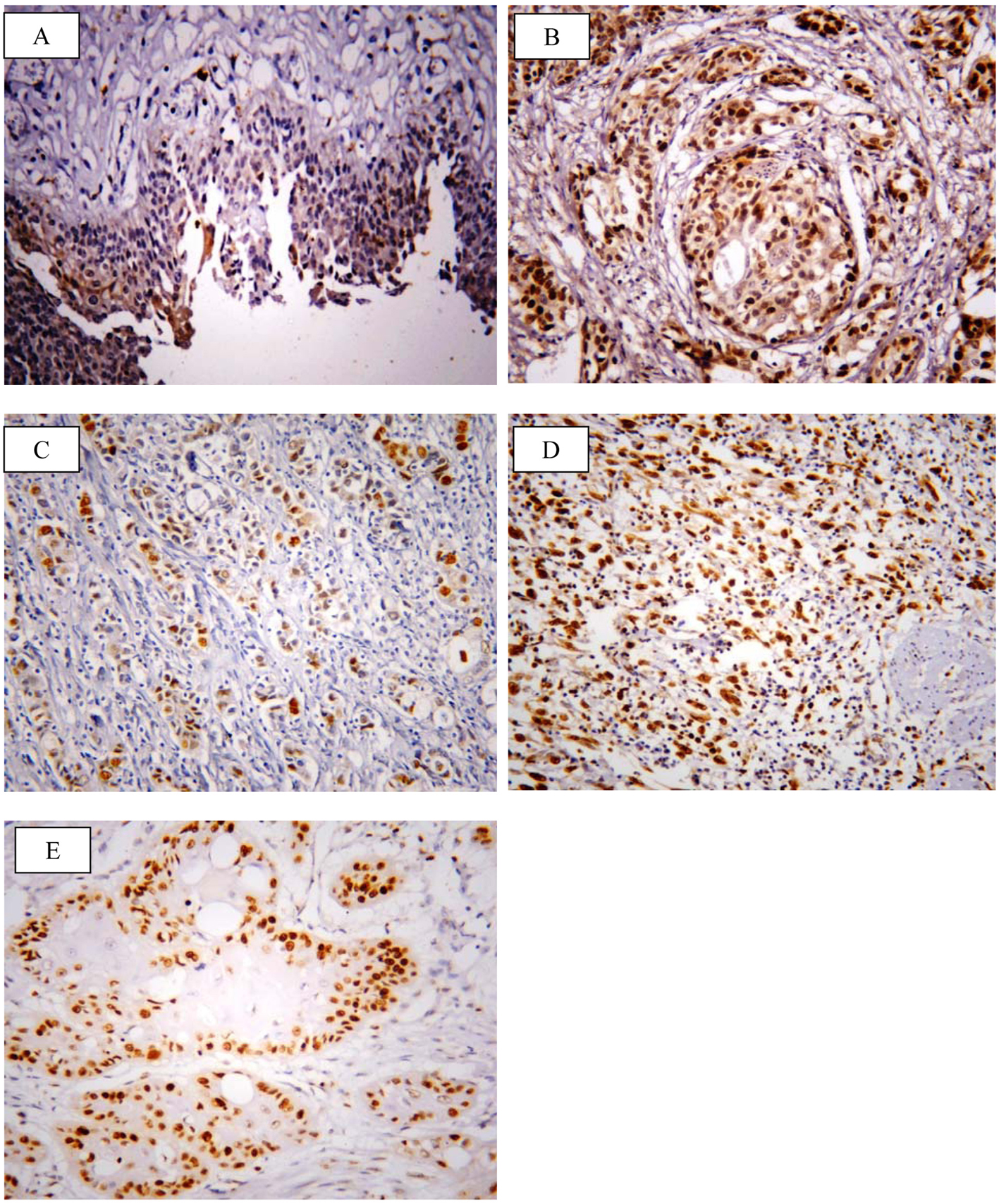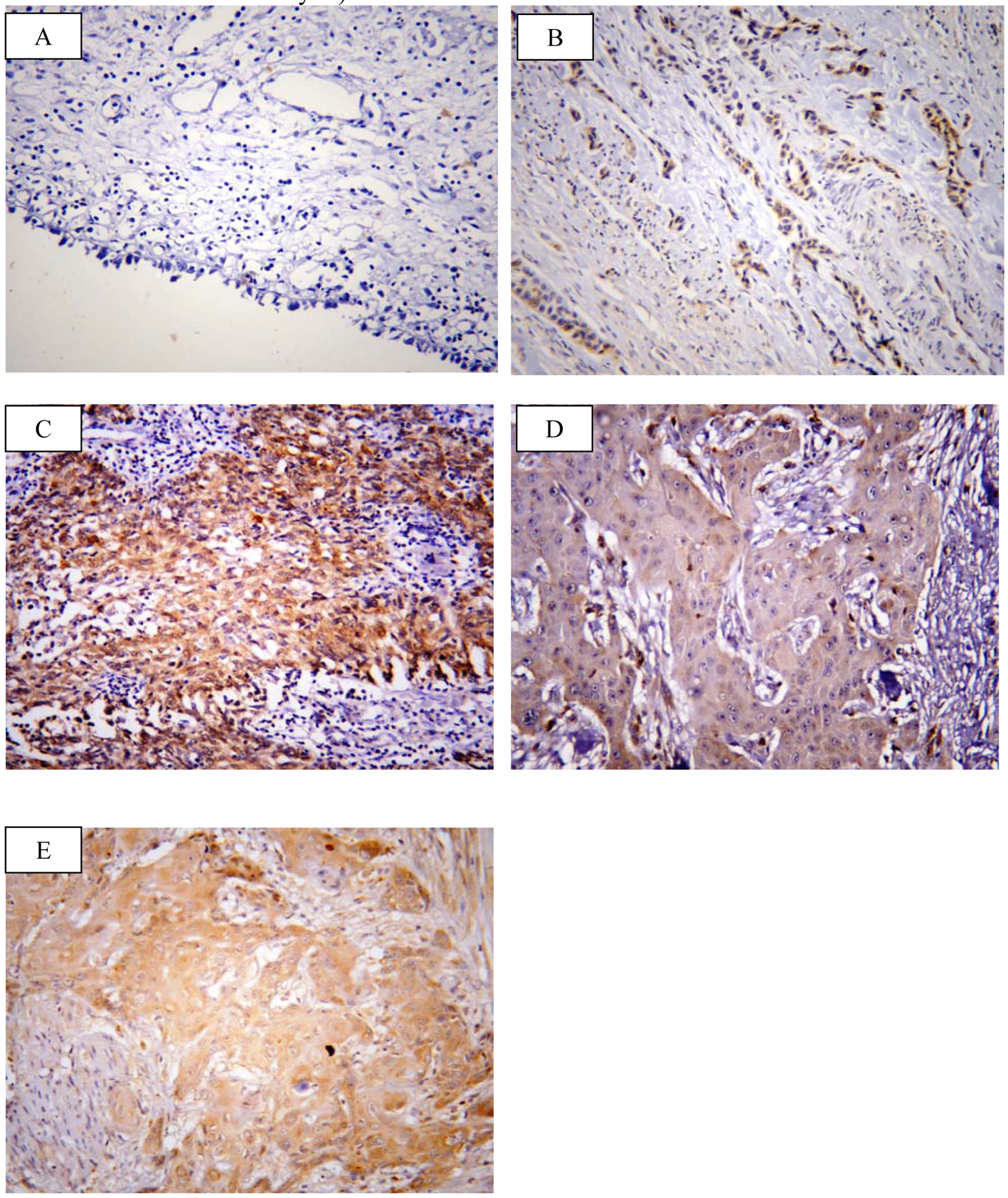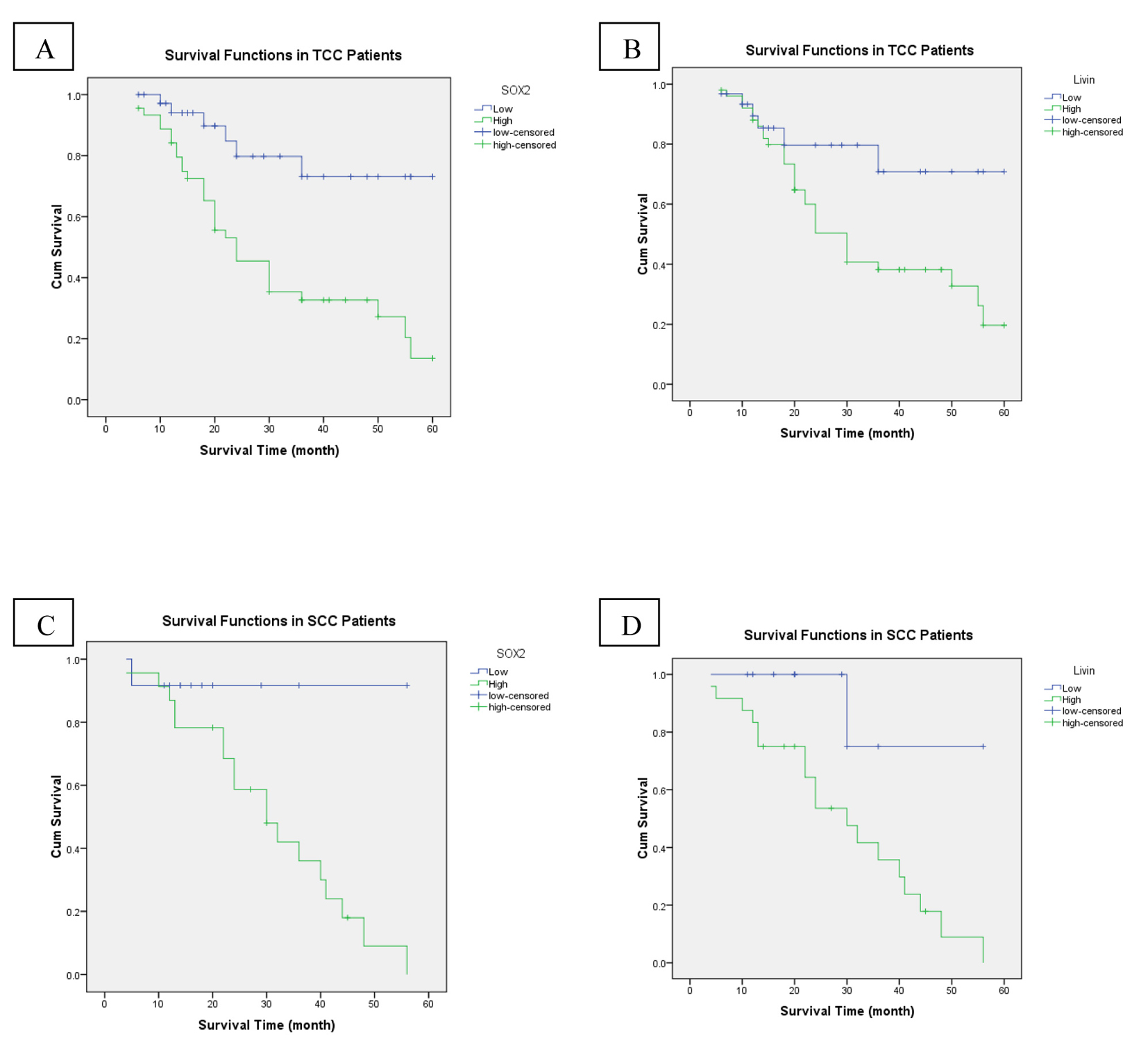
Figure 1. Representative immunohistochemical staining of SOX2 in human bladder cancer. (A) SOX2 showed negative/low expression in non-neoplastic bladder tissue. (B) High expression in high grade TCC. (C) Low expression in non-muscle invasive TCC. (D) High expression in muscle invasive TCC. (E) High expression in SCC (× 400; counterstained with hematoxylin).

Figure 2. Representative immunohistochemical staining of livin in human bladder cancer. (A) Livin showed negative expression in non neoplastic bladder tissue. (B) Low expression in low grade TCC. (C) High expression in high grade TCC. (D) Low expression in SCC grade I. (E) High expression in SCC grade II (× 400; counterstained with hematoxylin).

Figure 3. An analysis of overall-free survival in patients with bladder cancer by the Kaplan-Meier method. (A) According to SOX2 low/high expression in TCC patients (P < 0.001). (B) Low/high livin expression in TCC patients (P = 0.025). (C) SOX2 low/high expression in SCC patients (P = 0.041). (D) Low/high livin expression in SCC patients (P = 0.021).


